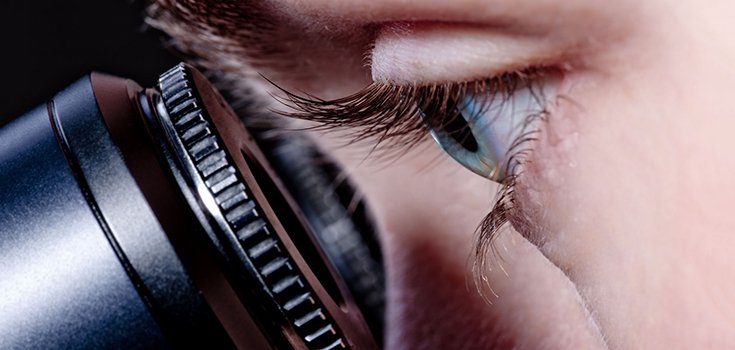Alzheimer’s May Soon Be Detected with an Eye Exam

Alzheimer’s has long baffled the medical community, leaving many of those who suffer and their family members frustrated and at the mercy of this cruel degenerative disorder. However, exciting new research shows that in may be possible in the near future to detect Alzheimer’s with a simple eye examination.
This innovation means the disease could be detected, and possibly stopped, before it wreaks havoc on the individual’s life. The study was recently published in the journal Ophthalmology and Visual Science.
Scientists and the University of Minnesota are engaging in research with mice that points toward the possibility of detecting early stage Alzheimer’s during a routine eye examination. Researchers found that older mice who suffer from Alzheimer’s have retinas that give off less of a reflection when a light source was shined in them than in their younger, Alzheimer’s-free counterparts. Scientists can also use a retinal image device to determine how much light is reflecting from the retinas and analyze exactly what the data means in terms of possible Alzheimer’s.
The study abstract reads:
“Hyperspectral imaging technique can be brought inexpensively to the study of retinal changes caused by Alzheimer’s disease progression in live small animals. A similar previous finding of reduction in the light reflection over a range of wavelengths in isolated Alzheimer’s mice retinae, was reproducible in the living Alzheimer’s mice. The technique presented here has a potential for development as an early Alzheimer’s retinal diagnostic test in humans, which will support the treatment outcome.”
Researchers say that the retina and brain undergo similar changes when afflicted with Alzheimer’s because they are both part of the central nervous system. However, changes can be more easily monitored in the retina because it can actually be seen with fairly minimal effort and in a noninvasive way, unlike the brain.
Read: 5 Simple Lifestyle Changes that Reduce the Risk of Alzheimer’s Disease
Dr. Swati More, an assistant professor at the Center for Drug Design said:
“We saw changes in the retinas of Alzheimer’s mice before the typical age at which neurological signs are observed. The results are close to our best-case scenario for outcomes of this project.”
The changes detected in the retina, or the less light that is reflected, is associated with amyloid buildup. When it appears in the retina, it is indicative that it is also present within the brain. This buildup is visible long before any neurological signs are present.
Dr. Robert Vince, director of the Center for Drug Design, said:
“Using currently available detection methods, you have to wait until the plaque is formed to identify Alzheimer’s disease. This technology is a noninvasive way to identify Alzheimer’s disease before plaque is formed.”
The first phase of a human trial to see if Alzheimer’s patients have the same build up on the retinas as mice will begin this month.
